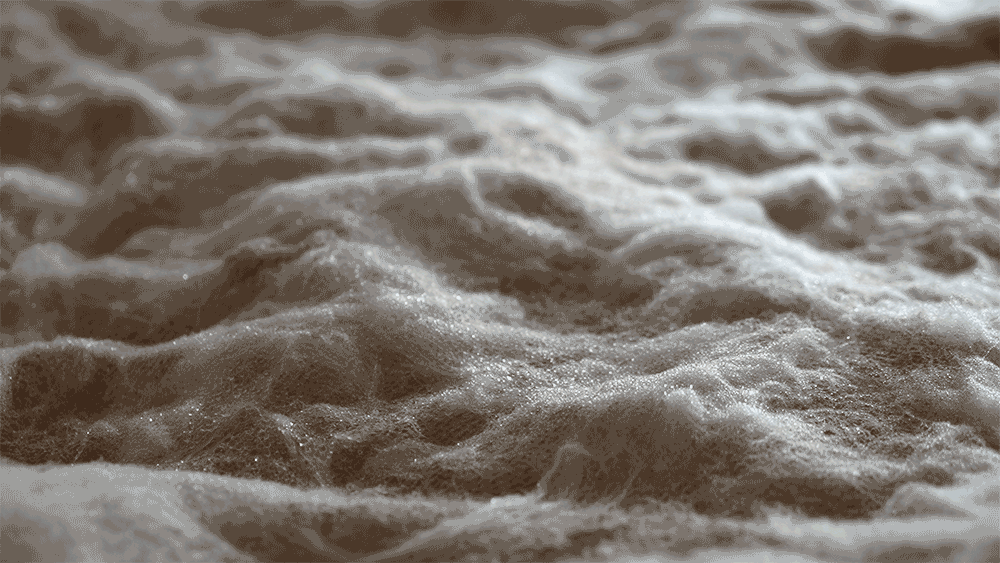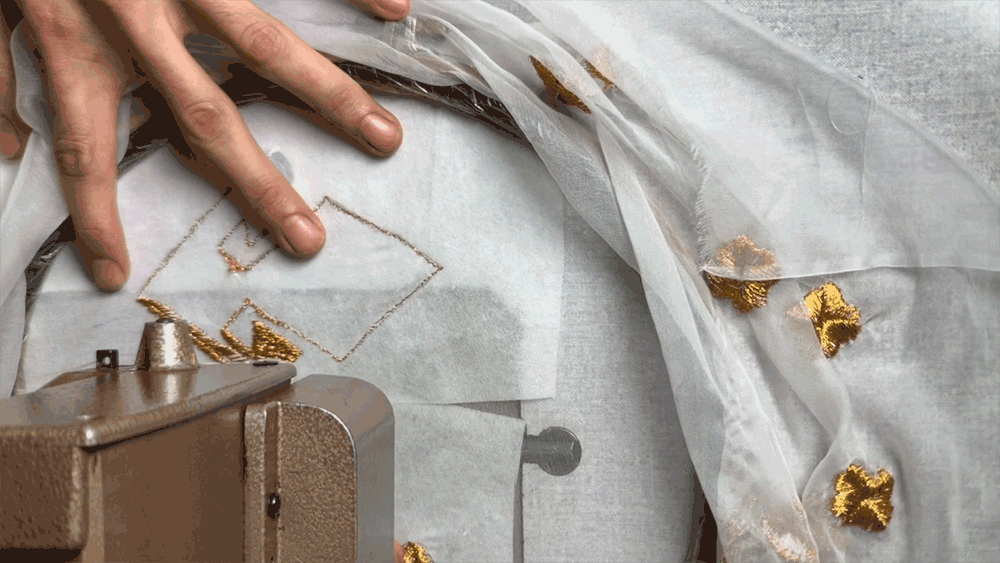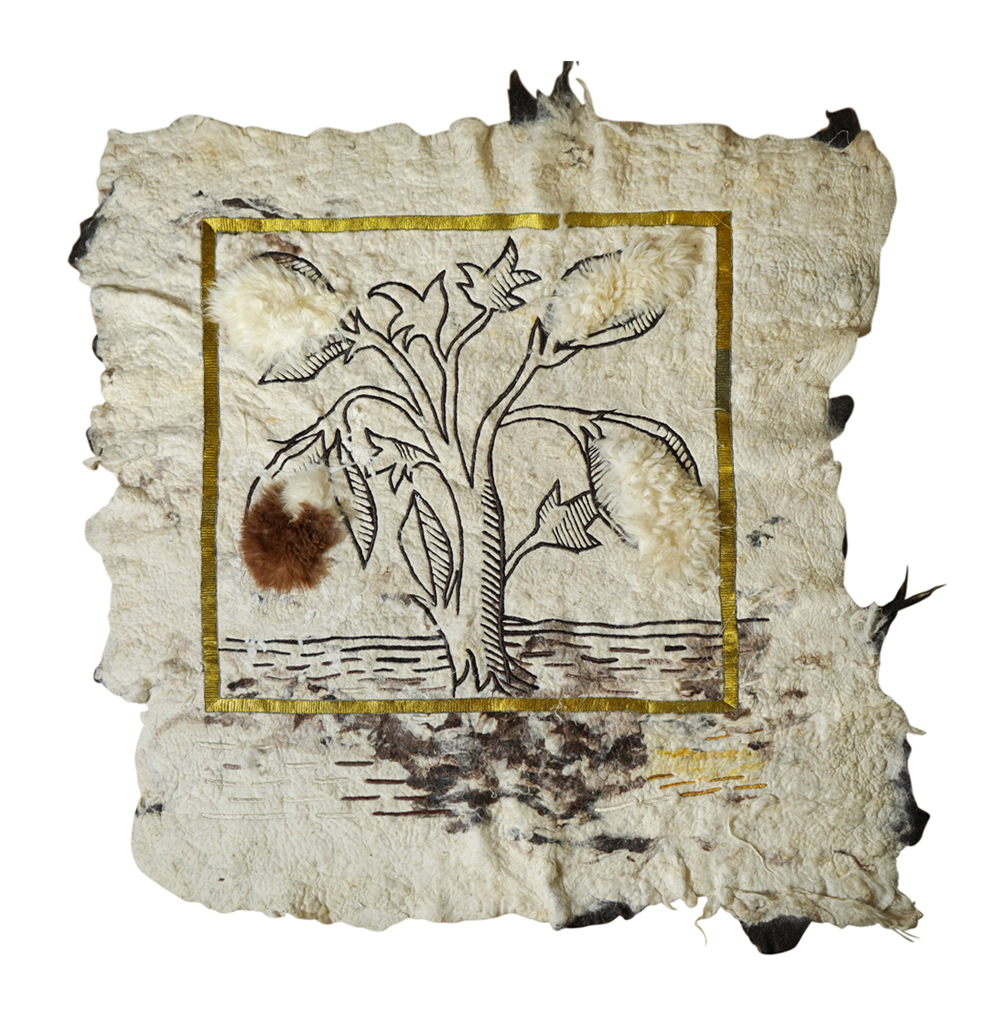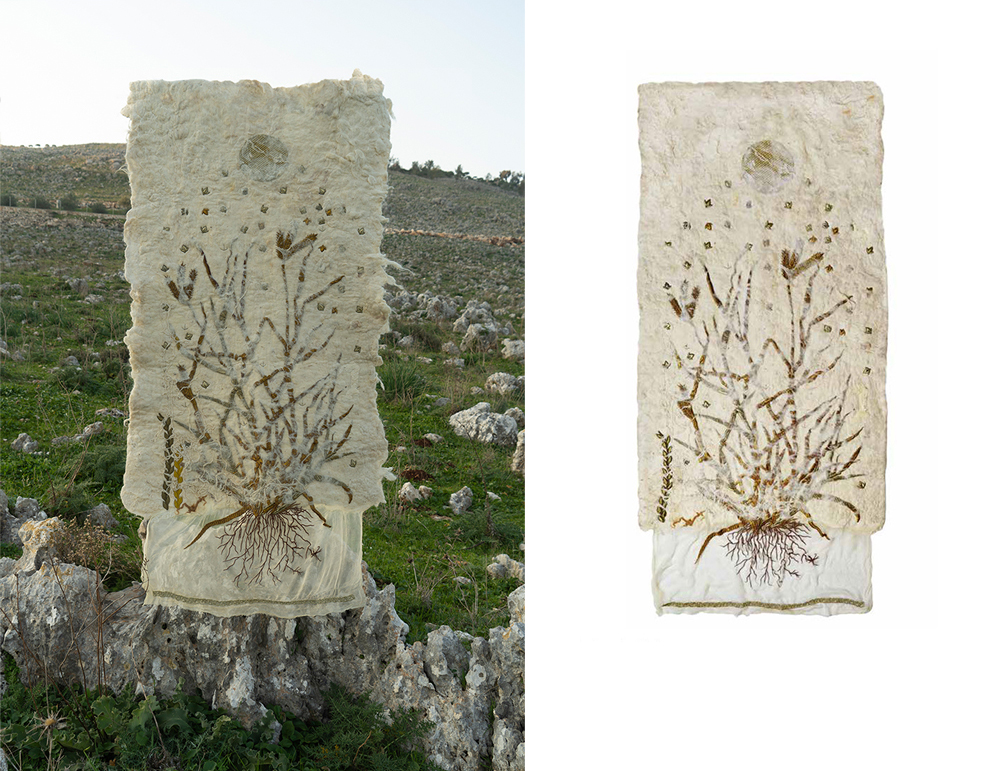Entangled Matters
This body of work begins with an ancient animal fiber: Awassi wool, bred in the Levantine region for over five-thousand years. This particular breed of sheep is a central figure in the human narrative, traditionally within the contexts pastoral imagery, biblical fables, and ritualistic practices of Abrahamic religions. Through the process of spinning, hand-guided embroidery, and felting, the wool is transformed into material artifacts laden with perspiration, emotions, mythologies, and symbolism. An intimate association transpires between the craftsperson and the crafted object, as the raw materials become hybridized skins in the form of large scale tapestries that summon themes of transcorporeality and biocentrism.
Felt is the oldest known textile, and its craft reflects an ancient complex task entailing the compression of fibers, and in the process, the condensation of history, context, locality, skill, the practitioner, and the animal. This work awakens a dormant instinct of a more tangible understanding of nature, an ancestral memory of simplicity in complexity and aversion to redundancy. Its revival in contemporary form engages the local community and celebrates an ancient skill and the civilization attached to it. During these unprecedented times, this moment of global fragility invites us to search for answers from a more integrated perspective, revisiting more primal and grounded forms of existence. It is in times of crisis that we find most freedom and clarity, exploring the realm of possibility to creatively shift our perspective toward a better future.
This body of work begins with an ancient animal fiber: Awassi wool, bred in the Levantine region for over five-thousand years. This particular breed of sheep is a central figure in the human narrative, traditionally within the contexts pastoral imagery, biblical fables, and ritualistic practices of Abrahamic religions. Through the process of spinning, hand-guided embroidery, and felting, the wool is transformed into material artifacts laden with perspiration, emotions, mythologies, and symbolism. An intimate association transpires between the craftsperson and the crafted object, as the raw materials become hybridized skins in the form of large scale tapestries that summon themes of transcorporeality and biocentrism.
Felt is the oldest known textile, and its craft reflects an ancient complex task entailing the compression of fibers, and in the process, the condensation of history, context, locality, skill, the practitioner, and the animal. This work awakens a dormant instinct of a more tangible understanding of nature, an ancestral memory of simplicity in complexity and aversion to redundancy. Its revival in contemporary form engages the local community and celebrates an ancient skill and the civilization attached to it. During these unprecedented times, this moment of global fragility invites us to search for answers from a more integrated perspective, revisiting more primal and grounded forms of existence. It is in times of crisis that we find most freedom and clarity, exploring the realm of possibility to creatively shift our perspective toward a better future.

















